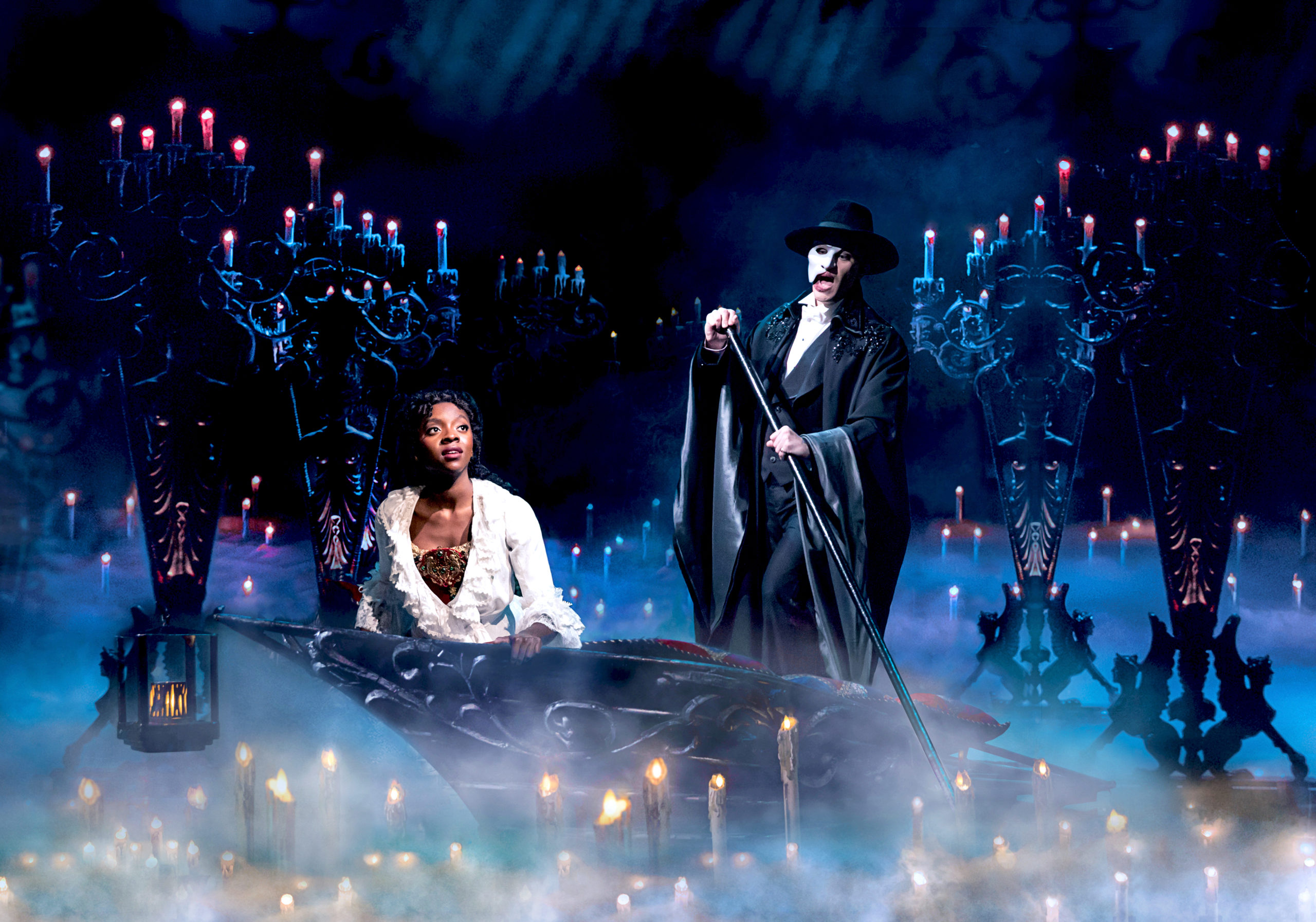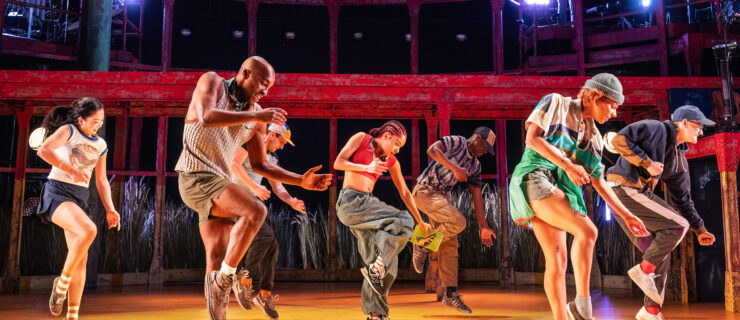What Has The Phantom of the Opera Meant for Dance and Dancers on Broadway?
It’s hard to imagine New York City without The Phantom of the Opera. The announcement that the longest-running show on Broadway would play its final performance on February 18, after 35 years at the Majestic Theatre, made headlines—and made me realize, with something of a shudder, that many—perhaps most—of the people performing in it, and in Broadway’s other musicals, can’t remember West 44th Street without Phantom’s iconic white mask and red rose looming overhead. But I can.
I also recall the frenzied anticipation that attended its arrival in 1988—it was A Chorus Line all over again, Hamilton before Hamilton. When someone asked, “Have you seen it yet?” there was only one show they could be talking about—it seemed you just hadn’t lived if you hadn’t experienced that swooping chandelier, that magical boat ride on a candlelit underground lake and Michael Crawford’s diabolically seductive singing of “The Music of the Night.” When the season ended, Phantom snagged 10 Tony nominations and won seven awards, including Best Musical.
I don’t know if the show feels quite as sensational to the people lining up outside the theater these days—some for the umpteenth time. They are part of a worldwide audience that now comes to more than 145 million who’ve bought tickets to productions in 17 languages to watch Christine swoon for the Phantom while Raoul swoons for her. Andrew Lloyd Webber’s musical is a proven commodity, a theatrical sure thing, and it’s not just the most-seen show in Broadway’s history. It has also made more money and employed more New Yorkers—about 6,500 in all, some 400 on the stage, many of them ex-bunheads dancing the late Gillian Lynne’s choreography.
One of them was Carly Blake Sebouhian, who was finishing up at School of American Ballet but couldn’t see herself fitting into a ballet company. So she took singing lessons and auditioned for theater, joining the Phantom cast in 2003. She had just turned 19 and was by far its youngest dancer. Now, nearly 20 years later, she reckons she’s the oldest. She’s left the show to do other projects—“It’s a unique thing to be able to expand your creative muscles and do something brand-new,” she says—but only briefly. “They always let people return, which is really cool. So even though there are people in and out all the time, it’s sort of always the same people—like this big, giant family.” In an industry where most jobs are short-lived, the myriad ballet dancers who’ve cycled in and out of its casts—whether in London, New York or the 181 other cities it’s played—have come, like the audience, to rely on The Phantom of the Opera.
It may be difficult to wrap our brains around its absence, but it’s no trouble to envision the art of the musical if it had never come along—which is not what you would say about other landmark shows. There’s a through line running from Oklahoma! to West Side Story to A Chorus Line that traces the growing importance of a musical’s choreography to its storytelling. With Contact and Movin’ Out, Susan Stroman and Twyla Tharp took that model even further, entrusting those shows’ narratives entirely to the dance. For me, that line has always represented progress, and despite the quantity and quality of Lynne’s work, Phantom stands firmly—proudly, even—outside it.
The story could hardly be told without a ballet chorus. Gaston Leroux’s lurid 1910 novel begins backstage with terrified young dancers fleeing the ghost they’ve heard rumors about, and when the Phantom finally shows up, his first words are “The ballet-girls are right.” At the start of the renowned 1925 silent film starring Lon Chaney, the curtain of the Paris Opéra rises on nearly four dozen dancers in Romantic tutus waltzing on pointe. Despite this ballet-centric setting, the musical’s choreography turns out to be quite extraneous—it provides lavish entertainment, along with the late Maria Björnson’s opulent sets and costumes and the sure-handed direction of the late Harold Prince. But Phantom’s dance numbers recall those in old-style musicals and, indeed, in the 19th-century operas that are part of the plot.
It’s peculiar, but not really surprising. For all their talent and decades of experience, Prince and Lloyd Webber were never among the theater artists who saw dance as the primary driver of musicals—although, ironically enough, as a fledgling producer, Prince was instrumental in bringing West Side Story to the stage. Working together and separately, on shows large and small, Prince and Lloyd Webber made work that focused on what a veteran of Broadway ensembles once described to me as “park and bark”—musicals where the dances are decorative interludes between songs and book scenes. And with Prince’s history-making “concept” musicals, like Company and Sweeney Todd, and Lloyd Webber’s history-making spectacles, like Cats and Phantom, that work has been vastly influential.
So you have to wonder, looking at a Phantom-less Broadway, what the next record-shattering behemoth will look like. The last 10 years of Tony winners run the gamut—they are romantic extravaganzas (Moulin Rouge!) and serious chamber pieces (The Band’s Visit); they use choreography in ways traditional (Kinky Boots) and bold (A Strange Loop); they are dance-heavy (Hamilton) and dance-light (Fun Home). For some of the nearly 20 million theatergoers who have seen Phantom at the Majestic, it’s been the thrill of a lifetime, their one exposure to a ravishing art form that New Yorkers often take for granted. For others, it’s been an obsession, a regular injection of an essential drug. And, of course, there are the haters, who see its success as proof that tourists are just too ignorant to appreciate Sondheim. For me, it’s been a constant reminder that when it comes to Broadway musicals, the work is never finished—Phantom was neither the apogee of the form nor a trashy entertainment for the masses. And I hope all of the above are eager to see what comes next. For Lloyd Webber, what comes next is Bad Cinderella, an updated, sardonic version of the fairy tale with choreography by JoAnn M. Hunter (School of Rock—The Musical). Its first preview is the day before Phantom closes. Fingers crossed. .




